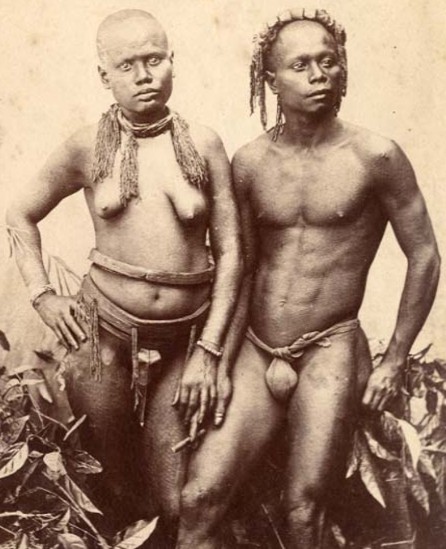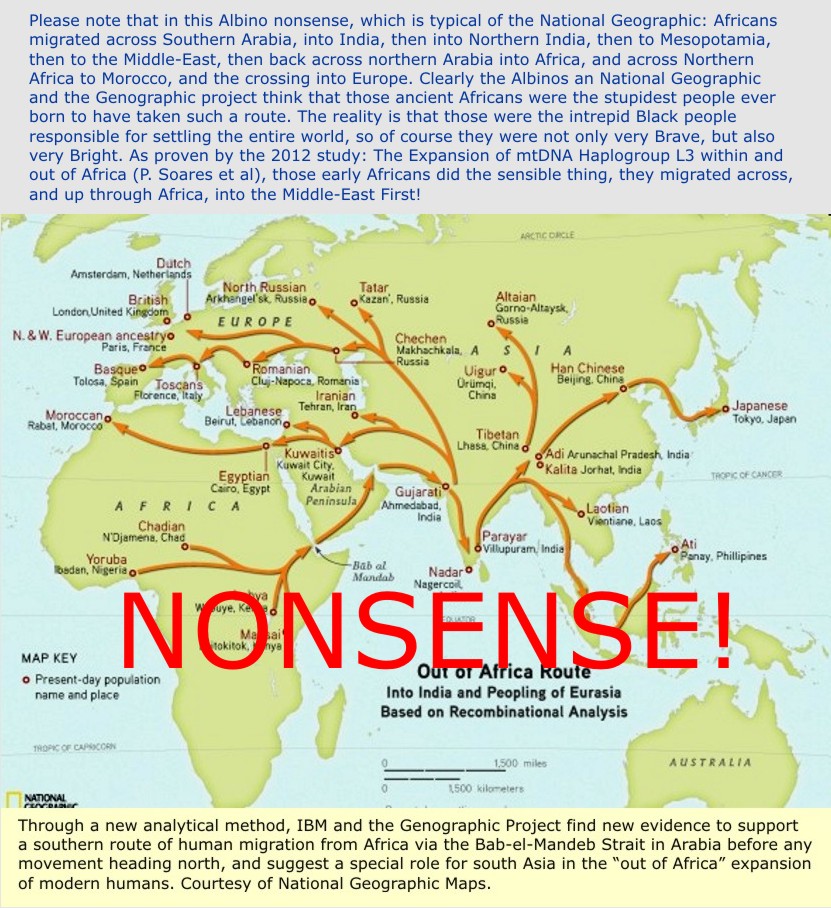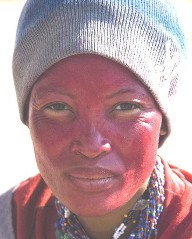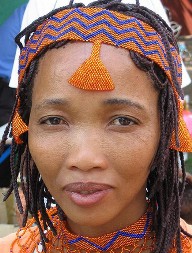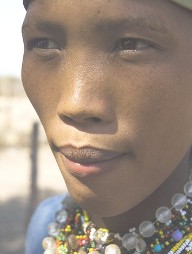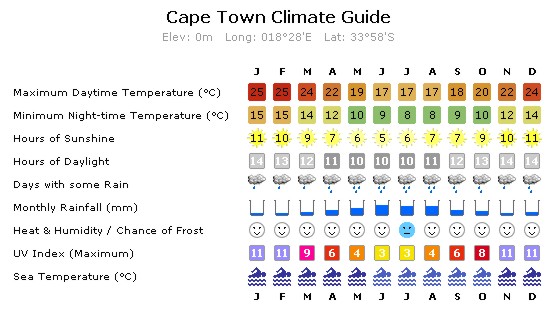Ancient Man and His First Civilizations
Neanderthal & Cro-Magnon
This is what McGraw-Hill Education textbooks teach students:
How Humans Evolved
23.4 Modern humans evolved quite recently. Modern humans evolved within
the last 600,000 years, our own species within the last 200,000 years.
Our species appears to have evolved in Africa, and then migrated to
Europe and Asia. Human Races. Our species is unique in evolving
culturally. Differences in populations in skin color reflect adaptation
to different environments, rather than genetic differentiation among
populations.
Imagine that in 2017 our children are being taught such inaccurate information!
But we are not after McGraw-Hill Education specifically; rather we are
after the Anthropologists who teach such nonsense.
Firstly – We ARE the only “Modern Humans”: Cro-Magnon and Neanderthal are NOT modern Humans.
The aging of ancient Bones:
Forensic Anthropologists use many methods to date remains: Cranium,
teeth, surrounding matter, all give clues to the identity and age of a
specimen. However, the chief method of dating is measuring “Radio
Isotopes”.
Carbon-12/14 dating:
Carbon-14
atoms decay at a constant rate, because they are radioactive. The rate
of radioactive decay of a substance is defined by its half-life, that
is, the time it takes for half the atoms in a radioactive isotope to
decay. Scientists have measured the half-life of carbon-14 atoms to be
approximately 5,700 years. At the same time, the environment constantly
produces new carbon-14, so that the percentage of carbon-14 in all
living plants and animals remains fairly constant.
When
an animal dies, it stops taking in new carbon. The carbon-14 it
contains, though, continues to decay, while the amount of normal
carbon-12 remains the same. Scientists can then compare the ratio of
normal carbon (carbon-12) to radioactive carbon-14 to determine an
approximate age of the creature by testing and analyzing its ancient,
fossilized bones.
Since the half-life of carbon-14 is about 5,700 years, carbon-14 can only be used reliably to date objects up to around 60,000 years old.
You've
probably heard scientists talk about things that they claim are
millions, if not billions, of years old, though. How did they get those
estimates? Carbon-14 is not the only radioactive isotope scientists can
measure and use to date an artifact. Other radioactive isotopes, such
as potassium-40, uranium-235, uranium-238, thorium-232, and
rubidium-87, have half-lives that extend from millions to billions of
years. They are used to date ROCKS, and by association, the fossils near them.
Back to Human and Humanoid remains:
To date - relatively FEW skeletons of ancient “HOMOs” have been found.
That means that for the many Millions of Homo-sapien-sapiens,
Cro-Magnons, Neanderthals etc. who have walked the Earth, we have found
the remains of maybe 0.0000000001 percent (an absurd number to
highlight an absurdity). But in that 0.0000000001 percent, our idiot
Anthropologists believe that they have found “CLOSE” to the very first,
and last, of each species – thus they can make estimates of their age
and linage. They are lying! Note – at RH, 400,000 years is the age used for Modern Humans.
|
A note to avoid confusion: It is a common misconception that Neanderthal and Cro-Magnon
were the forerunners of Modern Man. Actually Modern Man is much older
than both of them. Accordingly, Modern man and the Humanoids are
presented here, in the correct chronological order. |
A note on the confusing terminology that follows:
Originally Neanderthal and Cro-Magnon were not
classed as Sapien (Wise). This designation was reserved for "us" Modern
man. However, subsequent re-thinking by some - perhaps with other than
scientific agendas, caused these two early Humanoids to be re-classed
as Sapien. Thus they became Homo-sapien neanderthalensis, and
Homo-sapien Cro-Magnonensis, that leaves Modern Man with the really
screwy name "Homo-sapien-sapien" (Man the Wise Wise?). Though we do
understand that the elevation of Cro-magnon and Neanderthal to Sapien
status, does solve a great many problems - none related to science
though. However, the current move to place Cro-magnon with modern man
as "Homo-sapien-sapien", is really taking it too far, and it is
pointless, as science proves, Caucasians did NOT evolve from
Cro-Magnons in Europe.
Neanderthal
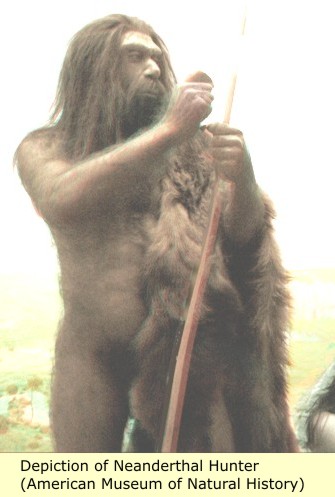 Now
lets look at Neanderthal, he was an "in-between" form of
Homo-sapien - less advanced than Modern man, but more advanced than
Homo-Erectus. He inhabited much of Europe and the Mediterranean lands
during the late Pleistocene Epoch, (about 100,000 to 30,000 years ago).
Neanderthal remains have also been found in the Middle East, North
Africa, and Central Asia. The name Neanderthal, derives from the
discovery in 1856 of the remains of this Humanoid in a cave above the
Neander Valley in Germany, not far from Düsseldorf.
Now
lets look at Neanderthal, he was an "in-between" form of
Homo-sapien - less advanced than Modern man, but more advanced than
Homo-Erectus. He inhabited much of Europe and the Mediterranean lands
during the late Pleistocene Epoch, (about 100,000 to 30,000 years ago).
Neanderthal remains have also been found in the Middle East, North
Africa, and Central Asia. The name Neanderthal, derives from the
discovery in 1856 of the remains of this Humanoid in a cave above the
Neander Valley in Germany, not far from Düsseldorf.
The last Glacial Ice stage in Europe was about 10,000
to 70,000 years ago, and it is from those times that the most numerous
skeletal remains of Neanderthals have been found. These have given us
some idea of Neanderthals body-type and habits. Neanderthals were
short, stout, and powerful in build. Cranial capacity equaled or
surpassed that of modern humans, though their braincases were long,
low, and wide and flattened behind. Their faces had heavy brow ridges,
large teeth, and small cheekbones. The chest was broad, and the limbs
were heavy, with large feet and hands. The Neanderthals appear to have
walked in a more irregular, side-to-side fashion than do modern humans.
Neanderthals were the first human group to survive in
northern latitudes during the cold (glacial) phases of the Pleistocene.
They had domesticated fire, as indicated by concentrations of charcoal
and reddened earth in their sites. Yet, their hearths were simple and
shallow and must have cooled off quickly, giving little warmth
throughout the night. Not surprisingly, they exhibit anatomic
adaptations to cold, especially in Europe, such as large body cores and
relatively short limbs, which maximize heat production and minimize
heat loss.
Neanderthals were cave dwellers, although they
occasionally built camps out in the open. They wore clothing, used
fire, hunted small and medium-sized animals (like goats and small
deer), and they scavenged from the kills of large carnivores. They made
and used a variety of stone tools and wooden spears. Neanderthals
intentionally buried their dead, both individually and in groups, and
they also cared for sick or injured individuals. Evidence of
ritualistic treatment of animals, which is sometimes found with their
skeletons, may indicate that they practiced a primitive form of
religion. Evidence from a few sites indicate that Neanderthals
coexisted for several thousand years with Modern Humans; who arrived in
Europe at about 45,000 B.C, and Cro-Magnons, who arrived in Europe by
35,000 B.C.
The origins of Neanderthals cannot be established
with any certainty. The forerunners of Neanderthal humanoids may date
to some 100,000 to 200,000 years ago. Some skull fragments found in
France are of that age, but they have characteristics more like modern
Homo sapiens. And so it may be, that this is where we see the first
evidence of modern man (modern man first shows up at about 400,000
years ago, and is much older than Neanderthal); cross-breeding with
Humanoids, in this case Homo-Erectus - who still existed as late as
300,000 B.C. Thus producing the hybrid "Neanderthal".
Please take special note: The proclivity of
ALL Humans to mate with whoever is available, is ingrained and
pervasive. The activity of cross-breeding will eventually account for
the introduction of all the modern worlds races and ethnicity's.
It was thought that Neanderthals anatomic adaptations
to cold had brought about a lightning of the skin, and thus played a
part in the evolution of White people. But scientific studies indicate
that modern White people show no genetic evidence of admixture with
Neanderthals that relates to their skin color. Though they do show
admixture with Neanderthal, as does the Billions of Black people
outside of Africa. It now appears that White peoples evolution was much
simpler and more direct. Click here for the working theory on the evolution of White people >>>
Neither Neanderthal nor White people were/are "Cold Adapted."
ALL Modern Humans are "tropically adapted" Africans.


<< One is a Black woman, the other is a White woman. They both can't be Neanderthal, therefore one is a lie. >>
In these pages of Realhistoryww, we often detail
instances of prestigious Albino institutions of higher learning proving
themselves to be just as lying and racist as any Redneck. Compare the
picture on the right with the results of this scientific experiment.
More Albino Nonsense
The underlined sentence above was meant
with great joy by Albinos desperate to find something special about
being Albino. And soon they to expand on the real results, they started
lie and create false facts and false scenarios. First they contrived to
make "Eurasian" mean "White and near-White Mongols". But the fact is
that Asia was Entirely Black in the beginning, at the time of
Neanderthal, and is still substantially Black, both Negroid and
Caucasoid Black. Additionally, South Asia and Oceania are Majority
Black, so as usual with the nonsense of Albinos, it doesn't hold water.
Then they started to do new studies, which built on their original lie:
From the study: "An X-Linked Haplotype
of Neanderthal Origin Is Present Among All Non-African Populations"
which produced this map. Apparently someone finally told them that the
Horn and North Africa is inhabited by Africans.
Another interesting lie (by absence of
truth) is that they made no effort to show these second set of facts:
In May 2010, researchers were able to get enough nuclear DNA from three
female Neanderthals who lived in a cave in Croatia 38,000 to 44,000
years ago to splice together and publish the first draft of a
Neanderthal genome. When they compared that draft genome with DNA from
modern humans in Europe, Asia, and Africa, paleogeneticist Svante Pääbo
of the Max Planck Institute for Evolutionary Anthropology in Leipzig,
Germany, and his colleagues found that modern Europeans and Asians—but
not Africans—have inherited between 1 percent and 4 percent of their
genes from Neanderthals. {As reported in Slate} Click for link:
As previously stated: to Albinos this proved that they were "Special" and "Advanced."
BUT THEN THIS:
In follow-up studies, researchers identified people who had
inherited about 3 percent of their DNA from the Denisovans, as well as
4 percent to 6 percent of their DNA from Neanderthals. These people are
found in a patchwork quilt of populations on islands of Southeast Asia,
including Melanesians in Papua New Guinea, aboriginals in Australia,
and Negritos in the Philippines.
So then if 1-4% Neanderthal makes
Albinos Special, one can only assume that having 4-6% Neanderthal makes
these people "SUPER SPECIAL" and "SUPER ADVANCED".
The charts below detail the amount of Neanderthal ancestry found in major populations
Link to source
Then there was this bit of stupidity:
This from the wiki article "Genetic admixture"
Quote: Admixture mapping is a method of gene mapping that uses a
population of mixed ancestry (an admixed population) to find the
genetic loci that contribute to differences in diseases or other
phenotypes found between the different ancestral populations. The
method is best applied to populations with recent admixture from
two populations that were previously genetically isolated for tens of
thousands of years, such as African Americans (admixture of African and
European populations). The method attempts to correlate the degree
of ancestry near a genetic locus with the phenotype or disease of
interest. Genetic markers that differ in frequency between the
ancestral populations are needed across the genome.
The Albinos admit that Blacks made it to Australia, which is about 10,000 walking miles away from Africa.
But they couldn't make it the very few miles to Europe until modern times.
As all can see: as Albinos keep
trying to maintain their lies of history and evolutionary superiority,
they must constantly create new and more outrageous lies. Which in
turn, only demonstrate their pathetic stupidity.
This is the rest of the Neanderthal studies
Unfortunately,
no discussion of Man's evolution or even Ancient History, is possible
without the interjection of Race. Simply put, Whites have
sought to make their own version of history, and in their history, they
are the original humans, and the creators of the subsequent
civilizations.
This is of course, a
blatant lie. But since Whites control most major centers of knowledge,
and the media too, these lies have become de facto truth. The
purpose of this site then, is to provide the truth - as best modern
science knows it. Please click here for some thoughts on racism, and it's probable causes >>> |
Cro-Magnon
Cro-Magnon is the name of a rock
shelter near Dordogne France. Here several prehistoric skeletons were
found in 1868, these human remains are of the Upper Paleolithic period,
40,000 –10,000 years ago. Among these bones is the cranium and mandible
of a male about 50 years old. This male is considered representative of
the Cro-Magnon type, and this particular specimen is known as the “Old
Man of Cro-Magnon.”
The skull is longheaded, the forehead is straight,
the brow ridges only slightly projecting, the cranial vault noticeably
flattened, and the occipital bone (at the back of the head) projects
backward. The cranial capacity is large, about 100 cubic inches.
Although the skull is relatively long and narrow, the face appears
quite short and wide. This combination is often regarded as a common
feature of the Cro-Magnon race.


<<Here again we see the White mans
"Loose" use of fact, to portray "His" concepts of reality. The fact is
that neither of these Busts accurately depict Cro-Magnon, as he is
described by skeletal analysis. It's just that one "Alludes" to
Blackness, and thus shows some attempt at accuracy, and the one from
the "West" does not even do that.>>
The forward projection of the upper jaw is also
distinctive. The eye sockets are low-set, wide, and rather square in
shape; and the nasal aperture of the skull is narrow and strongly
projecting. The mandible is robust, with massive ascending ramus (the
upward projection of the lower jaw, where it attaches to the skull),
has strongly developed points of muscular attachment, and a quite
prominent chin. The stature of Cro-Magnon is from five feet five inches
to five feet seven inches. Though in some areas they are taller.
The question of the relation of Cro-Magnons to the
earliest forms of Homo-sapiens (like Neanderthal) is still unclear. It
does appear however, that Cro-Magnons and Neanderthals are closer in
affinity than was once believed. Though Cro-Magnon is found all over
Europe, Asia and the Mediterranean, The tendency now is to locate the origin
of the Cro-Magnon type Humanoid in the Middle-east: as typified by the
remains found at the Jebel Qafzeh and Skhul sites in what is now
Israel. Though the inescapable logical conclusion, is that Cro-Magnon
is the product of Modern man cross-breeding with Neanderthal. Like all
the other theory's relating to early man, it has not yet been proven.
But just as complex as the origin of Cro-Magnons, is the duration of
Cro-Magnons. It appears that they only flourished during the Upper
Paleolithic (old stone age 40,000 - 4,000 years ago).
Cro-Magnoids
Modern type individuals with at least some Cro-Magnon characteristics (these are called Cro-Magnoids),
are found during the stone age in Europe, roughly from 5,000 to about
2,000 B.C. At the same time, remains have also been found for
individuals who were quite different, often broad-headed, (as opposed
to narrow headed).
There are still some modern human groups that
are thought to have retained a close relationship to Cro-Magnon types,
at least in their cranial morphology. Particularly noteworthy of these
are the Dal people from Dalecarlia (now Dalarna, Sweden.) and the
Guanches of the Canary Islands, who are thought to represent a
relatively pure Cro-Magnon stock.

Lets pursue the Guanches "Cro-Magnoids" a little
further: these aboriginal peoples inhabited the western and eastern
Canary Islands. They were first encountered by the conquering Spaniards
at the beginning of the 15th century. Both populations are thought to
have been of Cro-Magnon origin, and may possibly have come from central and southern Europe
via north Africa, in some distant age. Both aboriginal groups had brown
complexion skin, blue or gray eyes, and blondish hair. These
characteristics still persist in a large number of present day
inhabitants of the islands, but otherwise they are scarcely
distinguishable in appearance or culture, from the current people of
Spain. Neither original group now exists as a separate race. [Note:
the Solomon Island Boy on the left, is a fully modern Human, NOT a
"Cro-Magnoid". The picture is for the purpose of depicting coloration
ONLY.]
When discovered by the Spaniards, these aborigines
belonged to a stone age culture, though they were advanced enough to
have pottery. Their food staples consisted mainly of milk, butter, goat
flesh, pork, and some fruits; and their clothing was comprised of
leather tunics or vests made of plaited rushes. They left alphabet-like
engravings and characters whose meanings are obscure.
The Migrations of Modern Man
Australia, South Asia, and China
Eventually ancient Homo-sapien-sapiens (Modern Man), began to leave Africa: There were two great migrations East.
The first of these occurred about 60,000 B.C. This group followed a
coastal route across Southern Arabia and Southern Asia, then "Island
Hopped" to Australia. The second wave of migration occurred about
50,000 B.C. These may have been big game hunters who after crossing
Southern Arabia, followed an inland route in search of game; they reached China by about 45,000 B.C.
 |
BBC Article
Early humans' route out of Africa 'confirmed'
A
six-year effort to map the genetic patterns of humankind appears to
confirm that early people first left Africa by crossing into Arabia.
Ancestors of modern people in Europe, Asia and Oceania migrated along a
southern route, not a northern route through Egypt as some had
supposed. The results from the Genographic Project are published in the
journal Molecular Biology and Evolution.
It suggests an
important role for South Asia in the peopling of the world. The
ancestors of present-day non-African people left their ancestral
homeland some 70,000 years ago. The researchers found that Indian
populations had more genetic diversity - which gives an indication of
the age of a population - than either Europeans or East Asians.
This
supports the idea that pioneering settlers followed a southern coastal
route as they populated east Asia and continued into Oceania. "This
suggests that other fields of research such as archaeology and
anthropology should look for additional evidence on the migration route
of early humans," said co-author Ajay Royyuru, senior manager at IBM's
Computational Biology Center, which was involved in analysing the study
data.
A route out of Africa via the Arabian Peninsula,
along the southern coast of Asia, explained the observed patterns in
genetic diversity much better than a route through Egypt's Sinai
desert. This agrees with other evidence showing that sea levels might
have been low enough around 60-70,000 years ago for humans to cross
from the horn of Africa into Arabia via the Bab-el-Mandeb straits in
the Red Sea.
|
Click for link to original BBC article
In each new land that they found, some stayed behind and
made it their home. In India they created the Indus Valley
Civilization, in Burma and Thailand they eventually created the Ban
Chiang and Mon civilizations. In Cambodia, they created the Khmer
kingdoms of Funan and Angkor. In Vietnam, they created the Champa
civilization. In Indonesia, they created civilizations in Malaya and
the Indonesian archipelago. In Japan, they created the Jomon and Ainu
cultures. In China, they were the creators of the first civilizations,
the Xia and Shang civilizations.
New migration map released by National Geographic
A note of interest: The Bushman of the
Kalahari desert in South Namibia. Aka: The San People. Have by
genetic analysis been determined to be the closest to the original
Homo-sapien sapien in genetic makeup, and thus, the worlds Oldest
Humans!
The Complete Khoisan and
Bantu genomes from southern Africa have just been completed and
published (Received 11 August 2009; Accepted 6 January 2010). Click here for the study >>>
Europe
 Over
time, the last obstacle to Modern Mans Migrations started to disappear:
The Great Glacial Ice Sheets that once covered most of Europe, started
to melt. The first Modern Human to enter Europe, at about
45,000 B.C. was the Khoisan type African, commonly called "Grimaldi
Man". One known entry point into Europe for Grimaldi Man, was the
straits of Gibraltar, which were passable because of the lowered Sea
level caused by the "Ice Age". Once in Europe, Grimaldi Man
continued his migrations, and came to eventually inhabit all of Europe
and Northern Asia. The Easternmost limit of his range, appears to have
been the settlement known as Mal'ta in Siberia Russia, just north of
Mongolia.
Over
time, the last obstacle to Modern Mans Migrations started to disappear:
The Great Glacial Ice Sheets that once covered most of Europe, started
to melt. The first Modern Human to enter Europe, at about
45,000 B.C. was the Khoisan type African, commonly called "Grimaldi
Man". One known entry point into Europe for Grimaldi Man, was the
straits of Gibraltar, which were passable because of the lowered Sea
level caused by the "Ice Age". Once in Europe, Grimaldi Man
continued his migrations, and came to eventually inhabit all of Europe
and Northern Asia. The Easternmost limit of his range, appears to have
been the settlement known as Mal'ta in Siberia Russia, just north of
Mongolia.
Thought Grimaldi Man is known to have established
settlements as far south as Catal Huyuk in Anatolia. There is
uncertainty as to whether it was Grimaldi descendants, or a different
group, such as those who settled North Africa and the Middle East, that
can be credited with the creation of the original Southern European
civilizations, especially those in Italy and Greece. Likewise,
there is uncertainty as to what part, if any, Grimaldi people played in
the creation of the founding Xia and Shang civilizations of China.
However, by virtue of their settlements at Mal'ta Siberia, it is
certain that they were neighbors of the Africans who created those
civilizations.
| Click here for examples of the Pre-Historic Art of the ancient Africans of Europe. Click >>> |
North Africa and the Middle East
Thought the migrations of Modern Man into Europe, Asia, and
the Americas, (and the civilizations created in those places), is
covered here. The bulk of our presentation deals with Man's migration
into North Africa and the Middle East. Where he creates great
civilizations in Nubia, Egypt, Canaan, Mesopotamia, Iran, and India.
Links at the bottom of the page, guide you through the presentation.
Specifics of these ancient East
African migrations, which led to Modern Man's colonization of the
entire world can be found here. Though as one would expect, when it
comes to European and Anatolian (Turkey) settlement, it is not only
inaccurate, it is downright Racist. But what would you expect? https://genographic.nationalgeographic.com/genographic/lan/en/atlas.html
Genetics and material culture support repeated
expansions into Paleolithic Eurasia from a population hub out of Africa
Eurasia
Eurasia
is the largest continental area on Earth, comprising all of Europe and
Asia. Primarily in the Northern and Eastern Hemispheres, it spans from
the British Isles and the Iberian Peninsula in the west to the Japanese
archipelago in the east. |
 |
MARCH 14, 2011
Researchers find that modern humans originated in southern Africa
BY SANDEEP RAVINDRAN
The largest analysis of the genomic diversity of African
hunter-gatherer populations reveals that modern humans likely
originated in southern Africa, rather than eastern Africa as is
generally assumed. This study provides the clearest idea yet of where
modern humans originated.
About 60,000 years ago, modern humans left Africa and began the
spread to other regions of the world. But the great genetic diversity
of African populations made it hard to accurately predict where in
Africa humans might have originated. Now, a team led by postdoctoral
scholar in genetics Brenna Henn, PhD, and biology professor Marcus
Feldman, PhD, has found that modern humans likely originated in
southern Africa. To reach this conclusion, the researchers analyzed the
largest dataset to date for hunter-gatherer populations. The study was
published online March 7 in the Proceedings of the National Academy of
Sciences.
“Our belief used to be that the center of humans leaving Africa was
in east Africa. This paper focuses attention on southern Africa, and in
particular a group of hunter-gatherers, the Bushmen, who speak one of
the Khoisan languages,” said Feldman. These languages are characterized
by the presence of “click” sounds.
Africa has been inferred to be the continent of origin for all
modern human populations, with the earliest modern-human skulls having
been discovered in east Africa. In addition, populations outside Africa
contain a subset of the genetic diversity found there. As modern humans
moved eastward, the level of variation decreased, reaching its minimum
in the Americas. But the details of genetic evolution within Africa
have remained hazy.
This is mainly because African populations are some of the most
genetically diverse in the world. A lack of sufficient genetic samples,
especially from the hunter-gatherer populations, made it hard to infer
much about early human evolutionary history. “We’ve just never had
enough people represented in our studies before,” Feldman said.
“Without the participation of these people, patterns of evolution
within Africa can’t be determined,” he said.
The current study provides “a much more satisfying answer,” said
Feldman. “We just didn’t have as much DNA data earlier,” he said.
Before this study, only a handful of Namibian Khoisan-speakers had been
compared with other Africans. To get an accurate picture, the
researchers needed to compare the genetics of different hunter-gatherer
populations, as well as individuals within each population, at hundreds
of thousands of sites in the DNA. According to Feldman, the researchers
needed the participation of more Bushmen, and Henn, the paper’s first
author, accomplished this.
The scientists analyzed variations in the individual nucleotide
bases that make up DNA. They genotyped 650,000 such individual changes
or “single-nucleotide polymorphisms” in people from 25 African
populations. Apart from the click-speaking hunter-gatherer populations
from South Africa and Tanzania, they also studied Pygmies and 21
agriculturalist populations. Statistical analysis showed that the
Bushmen had the greatest genetic variation and are most likely to be
the source population from which all other African populations diverged.
Different genetic variants contain different combinations of genes,
which can be thought of as a single string. Genetic recombination
breaks these strings into smaller segments. The older the population,
the shorter the segments and the greater the genetic variation. It was
already known that the most variation and hence shortest segments
occurred in Africa. The new study found that within Africa, the Bushmen
have the shortest segments, and segment length increases as one moves
from south to north.
More than 5,000 years ago, sub-Saharan Africa was populated mainly
by linguistically and culturally diverse hunter-gatherer populations.
Since then, most of these populations have either gone extinct or
turned to agriculture and pastoral living, leaving only the Pygmies in
central Africa, a click-speaking tribe of Tanzania, the Hadza, and
southern African Bushmen, as the last hunter-gatherers.
“The paper is also fascinating in that some hunter-gatherer groups
have never mixed with their neighbors,” said Feldman. “The mystery is
whether there ever was a connection between the different
click-speaking peoples in the past. Brenna and the team have shown that
if such a connection ever existed, it was long before the invention of
agriculture.”
As evidence of the uniqueness of some of these populations, the
researchers found that certain immune system proteins that appear
almost nowhere else on Earth occurred at a higher frequency in one
hunter-gatherer group. The scientists also found signs of natural
selection related to genes involved in immune response and protection
against pathogens.
Henn and Julie Granka, a graduate student in biology, recently
revisited the South African Bushmen who participated in the study and
took height and skin color measurements from the people whose DNA they
had analyzed. “We will be collaborating with several South African
scholars to look at such phenotypes in more detail,” Feldman said.
According to Feldman, despite large ongoing projects researchers
still don’t know enough about human variation. “Not enough populations
around the world have been studied,” he said. For example, “We don’t
know much about Australian Aboriginals, indigenous Americans or South
Asian people, who comprise nearly a sixth of the world’s population,”
he said.
Feldman and other researchers working with the Human Genome
Diversity Project, based at Centre d’Étude du Polymorphisme Humain in
Paris, hope to engage other populations in the search for their
evolutionary ancestry. “There are lots of evolutionary problems to be
solved,” he said. “Analysis of DNA is our best chance to solve them.”
Genetics professor Carlos Bustamante, PhD, and postdoctoral scholar
Jeffrey Kidd, PhD, are co-authors on the study, funded by the Center
for Human Origins and Evolution, the Morrison Institute for Population
and Resource Studies at Stanford, a UCSF Chancellor’s Graduate Research
Fellowship and the National Institutes of Health. |
The oldest man-made structure on earth is in South Africa,
it is known as Adams Calendar,
and more recently as Enkis Calendar.
Click for link to Adams Calendar page
This latest
theory is worth considering because the San demonstrate a wide range of
phenotypes that could easily evolve into the modern variations of
Mongols, European Albinos, and Africans that we see today.
Modern San
Accepting the San as the first Humans also allows for easy explanation of African skin colors.
The UV index of South Africa reaches
the maximum of eleven in only four to six months of the year. Therefore
"Brown Skin" provides ample protection from the Sun.
But to the north at the Equator, the UV index is a CONSTANT maximum of eleven all year long.
There, the Blackest skin possible would be necessary to protect humans from the Sun.
That leaves just one more Human attribute to be explained:
Straight Hair.
Previously we have seen that Albinism (a defective "P" gene) actually straightens the hair.
And we have also seen that the
effects of a defective "P" gene are not always universal. Thus a person
with a defective "P" gene might only have it effect the EYES.
Or only the HAIR:
And of course, when the effects of a defective "P" gene ARE universal, we get the Dravidian Albino:
formerly of Central Asia, and now of Europe.
The presumed ancestry of Modern Mongols
| Genetic
data shows that the biochemical systems of Asian and European
populations, appear to be more similar to each other, than they are to
African populations. thus, Asians (Mongols) and Europeans (Caucasians)
may have shared a common ancestry with each other, some 40,000 years
ago and a common ancestry with African populations before that. The Out
of Africa (OOA) migration, which took Africans into Asia, occurred at
about 50,000 B.C. The modern Mongol shows great affiliation with San
Africans in body type and facial features, thus the presumed genesis
below. |
Since White people interject themselves so
pervasively in the "Presentation" of ancient history, though not in the
actual making of it. We will go directly to the first contacts between
Black and White people, since the (OOA) events, this occurs in Eastern
Europe sometime around 1,500 B.C. Click "NEXT" below.
Please visit the "Additional Material Area" for many more photographs of each civilization, and related material <Click> |
 Now
lets look at Neanderthal, he was an "in-between" form of
Homo-sapien - less advanced than Modern man, but more advanced than
Homo-Erectus. He inhabited much of Europe and the Mediterranean lands
during the late Pleistocene Epoch, (about 100,000 to 30,000 years ago).
Neanderthal remains have also been found in the Middle East, North
Africa, and Central Asia. The name Neanderthal, derives from the
discovery in 1856 of the remains of this Humanoid in a cave above the
Neander Valley in Germany, not far from Düsseldorf.
Now
lets look at Neanderthal, he was an "in-between" form of
Homo-sapien - less advanced than Modern man, but more advanced than
Homo-Erectus. He inhabited much of Europe and the Mediterranean lands
during the late Pleistocene Epoch, (about 100,000 to 30,000 years ago).
Neanderthal remains have also been found in the Middle East, North
Africa, and Central Asia. The name Neanderthal, derives from the
discovery in 1856 of the remains of this Humanoid in a cave above the
Neander Valley in Germany, not far from Düsseldorf. 






